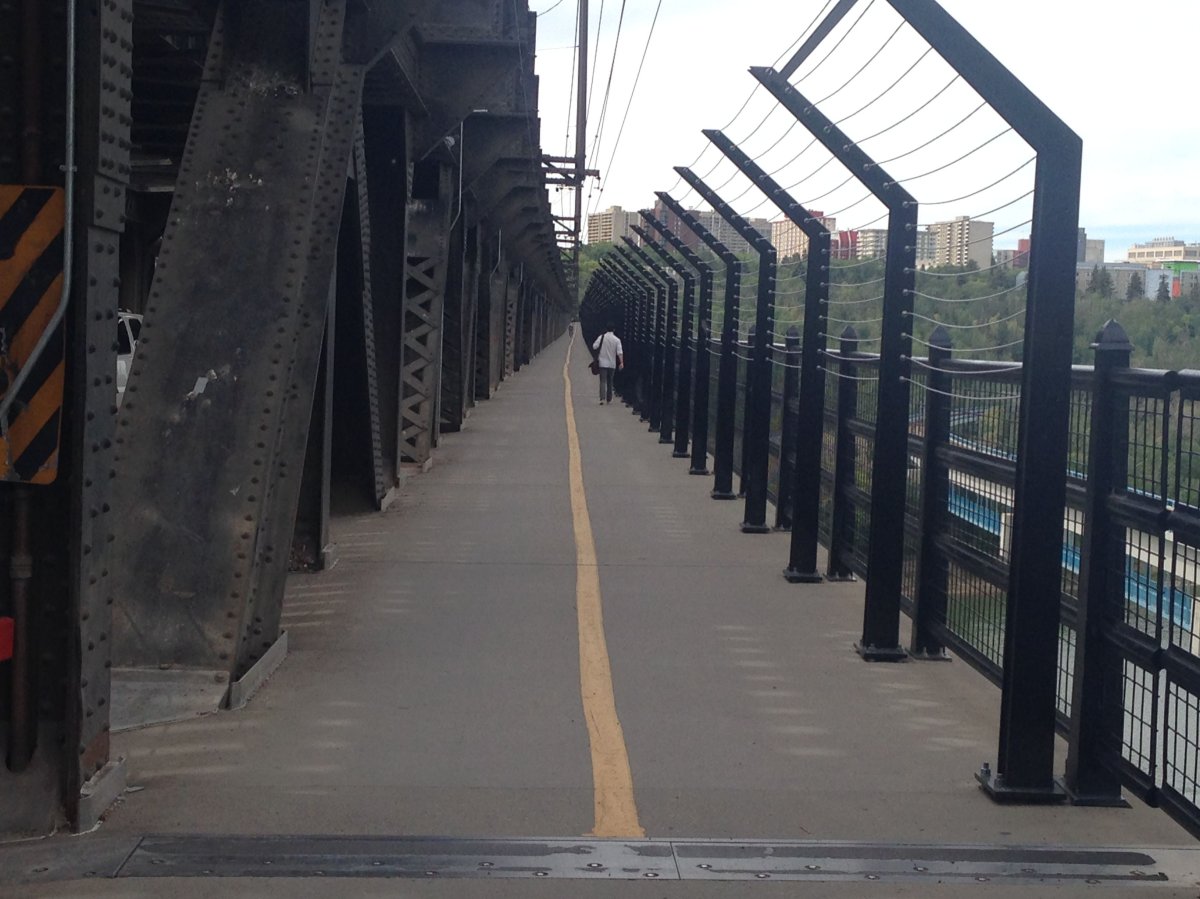The City of Edmonton has hired a consulting engineer to look at what else they can do to the High Level bridge, besides the regular rehab work that’s been scheduled five years from now. Extending the width of the sidewalks or shared use paths is one of the options under consideration.

The move is in response to the large number of proposals from the community to increase “active transportation” on the 100-year-old bridge, including walking, cycling and even adding access to the upper deck.
Coun. Ben Henderson has fielded calls from people who don’t feel as safe as they did prior to last year’s installation of suicide barriers.
“There’s a lot of pedestrians that are really hesitant to use the bridge now.”
That’s because of the close quarters they find themselves in with cyclists who go whizzing by, especially on the eastern side of the bridge, which is narrower than the western edge.
Jason Meliefste, the branch manager for infrastructure planning, confirmed the hiring of the consultant.
“Basically they’re exploring the current state of the infrastructure, what its current condition is, where some of the major priorities in terms of rehabilitation might be,” he said. “And then what are some of the broader constraints, recognizing the bridge was designed for a purpose from the early 1910s and how its use has evolved?”
- What is a halal mortgage? How interest-free home financing works in Canada
- Capital gains changes are ‘really fair,’ Freeland says, as doctors cry foul
- Budget 2024 failed to spark ‘political reboot’ for Liberals, polling suggests
- Peel police chief met Sri Lankan officer a court says ‘participated’ in torture
He said they want to make sure the bridge is sound enough structurally to have extra features like wide walking and cycling trails, and even increased access from the road system to get up to the upper deck.
There is still talk that an LRT circulator route will be added to Edmonton Transit to serve downtown and Old Strathcona in future years. The upper deck is also currently used for the city’s streetcar.
“The technical feasibility part is just an informing piece to know whether or not it’s a fatal flaw,” Meliefste told reporters. “Can we do this or can we not? There’s no point in having a broader conversation if you’ve already explored that engineering-wise, you can’t even do it.”
The rehab work is scheduled for five years from now as part of the next budget cycle, sometime between 2018 and 2022.
In the meantime, Coun. Henderson is hoping something can be done to get cyclists and pedestrians split on one side or the other.
However, he agreed it’s an unlikely solution since it’s difficult to get from one side of 109th Street to the other at both the north and south ends of the bridge.
“It’s so convoluted when you get off at the end,” Henderson said. “It’s not an easy thing to do. I’d like us to see if there’s a quick fix that we can do in terms of those access points at both ends of the bridge.”
The city is also going to update an education campaign to remind cyclists and pedestrians they have to watch out for each other on the shared-use paths.






Comments